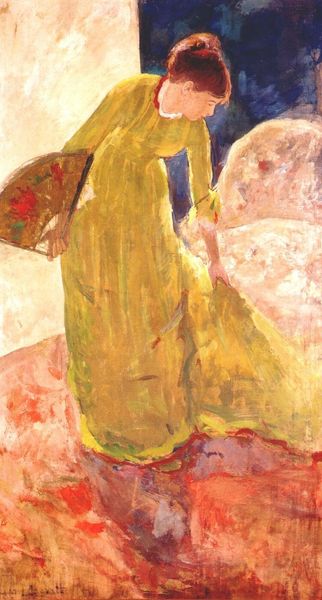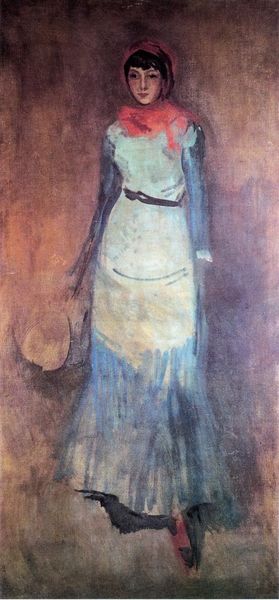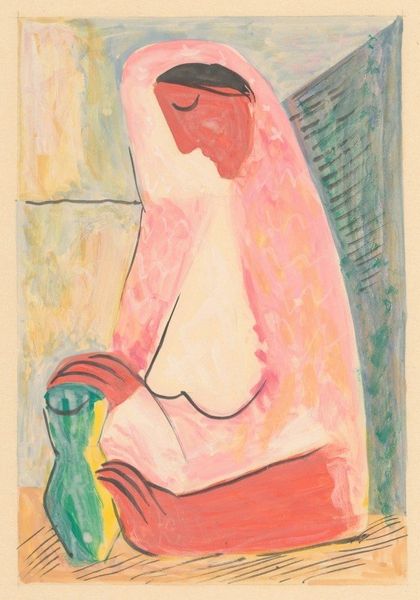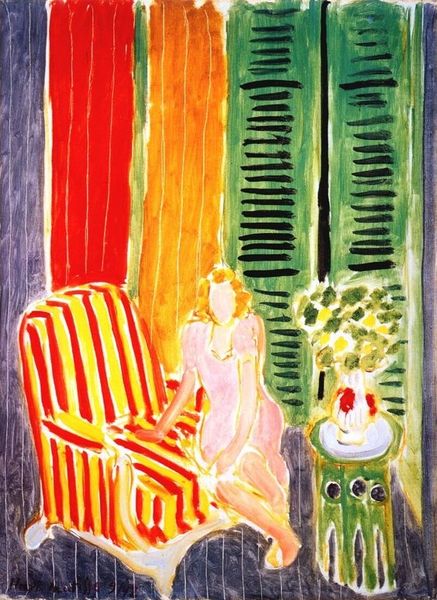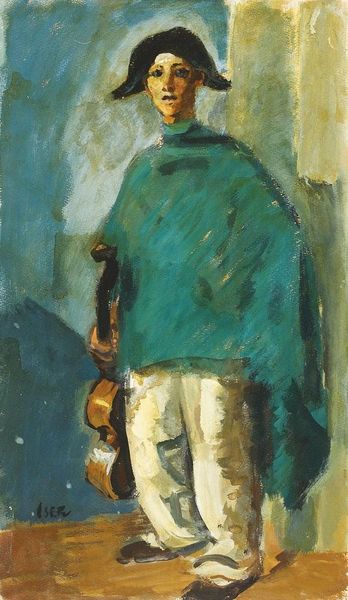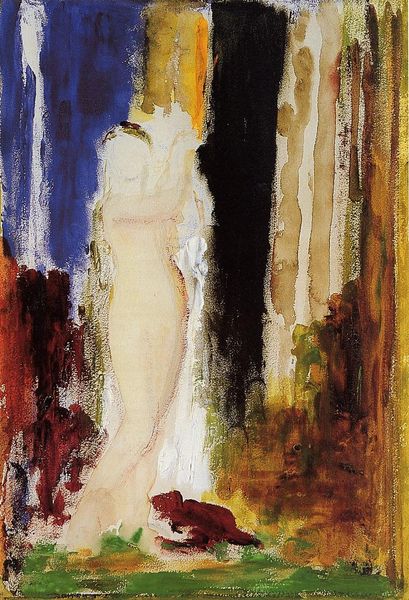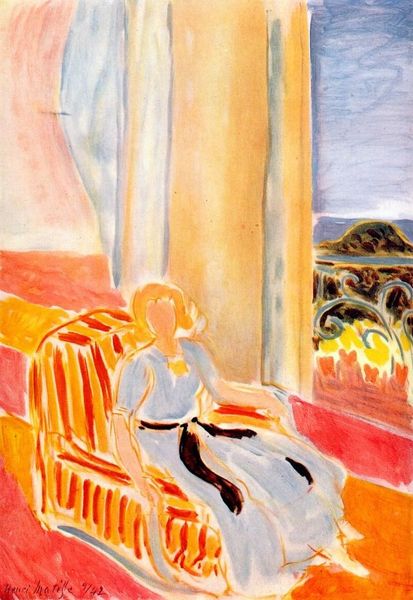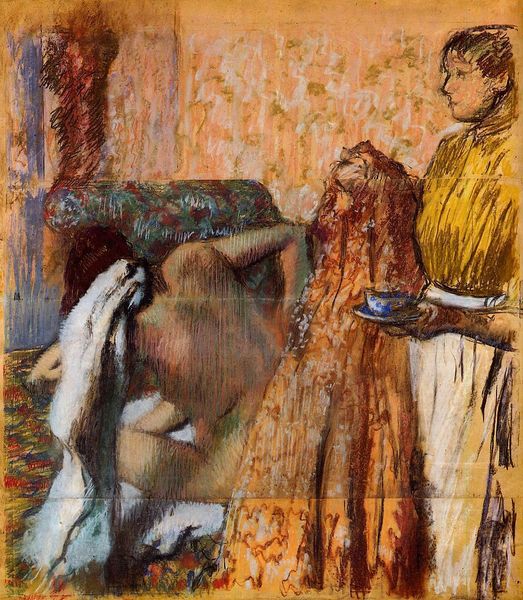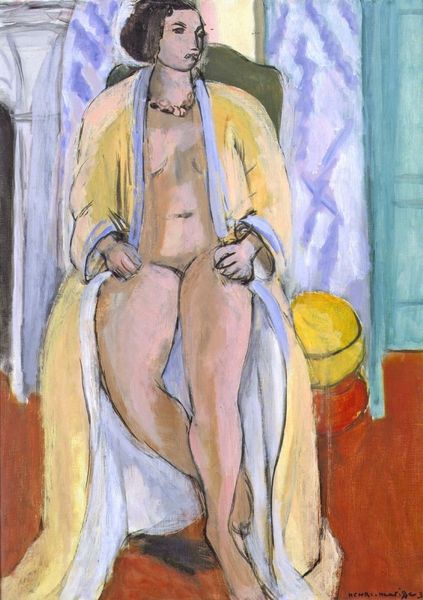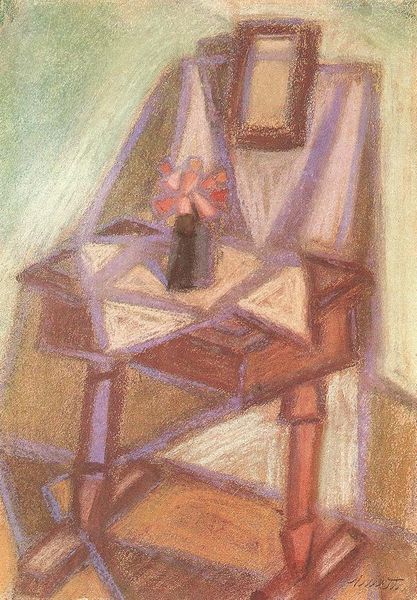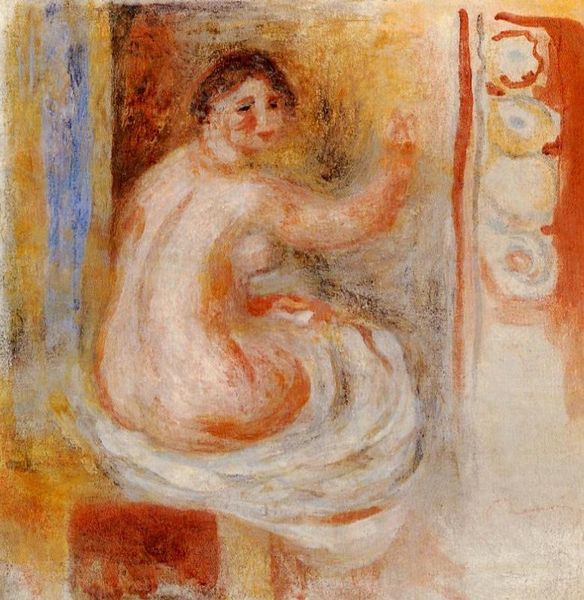
Copyright: Henri Matisse,Fair Use
Editor: We’re looking at Henri Matisse's "The Moorish Woman" from 1930, seemingly a watercolour and oil painting. There’s an undeniable delicacy to the depiction of the figure, almost ethereal, yet the still life objects in the foreground are far more solid. What historical lenses can we use to understand this piece? Curator: Considering this through a historical lens, it’s crucial to examine Matisse’s relationship with Orientalism. In the early 20th century, there was a European fascination – often an appropriation – of North African cultures, influencing fashion, design, and of course, art. How do you see Matisse engaging, or perhaps even grappling, with this trend? Editor: Well, I see a potential problem there. Is this piece an exoticizing representation? Curator: Precisely! Matisse visited North Africa, particularly Morocco, before creating this artwork, informing this depiction. But was this simply inspired by reality, or shaped by colonial power dynamics? Did the cultural moment dictate that a Western, male artist held the gaze? Consider what’s highlighted – the veiled figure, the decorative objects… these became stereotypical emblems of ‘the Orient’. How much control, if any, did actual Moroccan women have over their image at that time? Editor: So, even though the brushstrokes are delicate, and the colours are pleasant, the painting can perpetuate power imbalances… It really invites reflection about representation and artistic responsibility. Curator: Absolutely. We should ask ourselves: how does this piece inform our understanding of cross-cultural exchange and its problematic aspects within art history? How much does the perspective of museums influence which pieces are remembered? Editor: I had been admiring the formal qualities without realizing what I missed about its socio-historical dimensions! It offers another layer of complexity. Curator: Exactly. It highlights the importance of continually interrogating the power dynamics at play. It requires us to reflect not just on beauty but responsibility, engagement, and perspective.
Comments
No comments
Be the first to comment and join the conversation on the ultimate creative platform.
